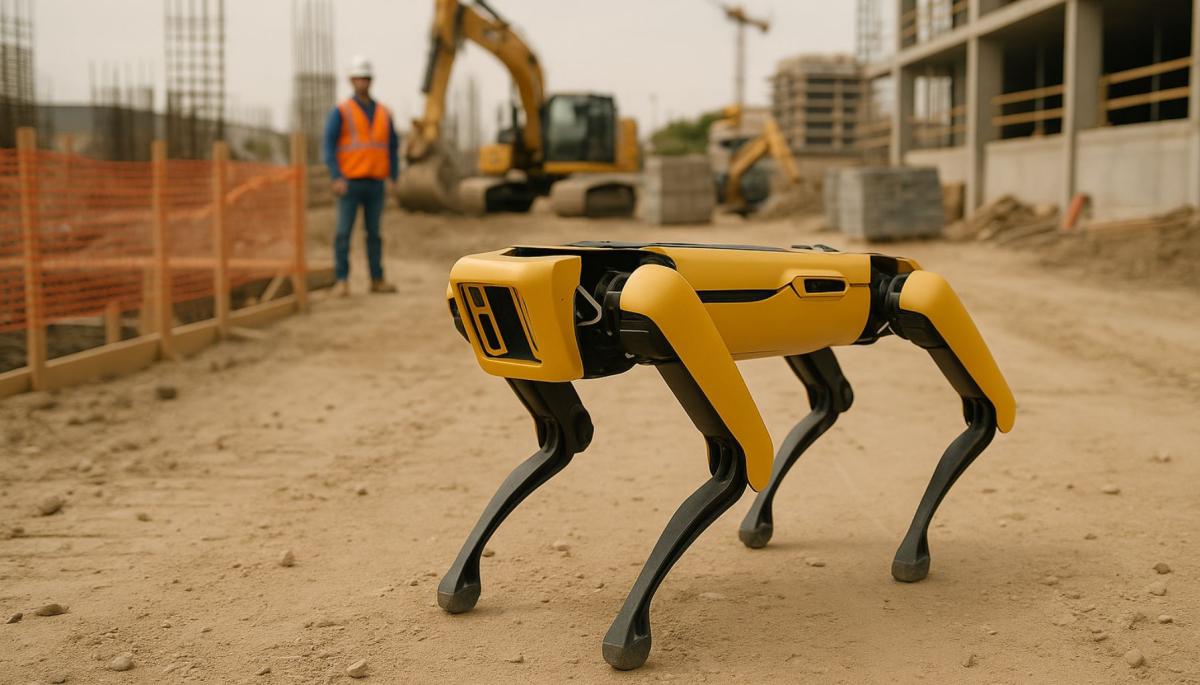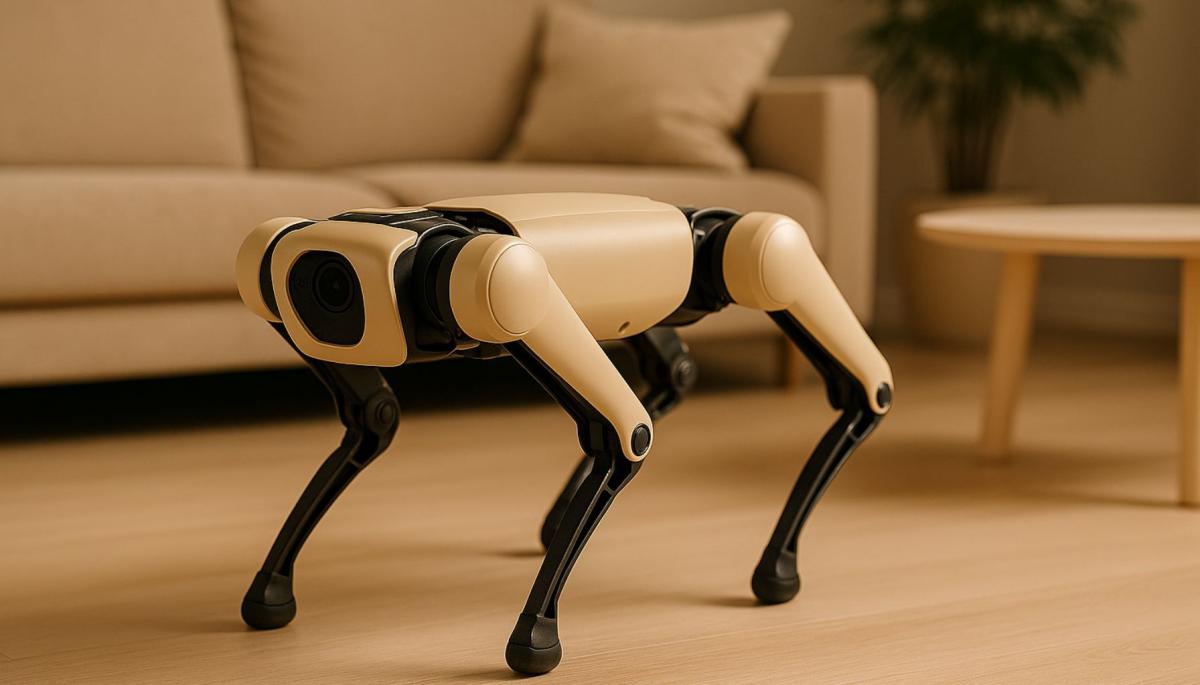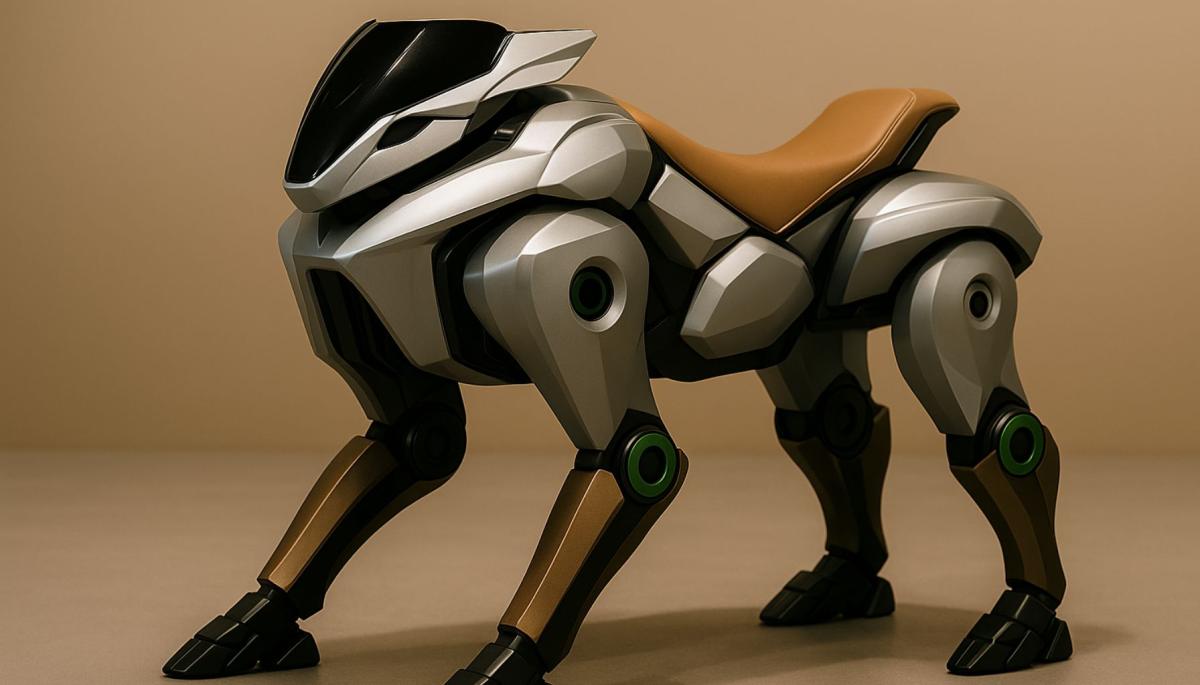Quadruped robots – the four-legged helpers of the future – are no longer just sci-fi. They oversee construction sites, can map hazardous environments, and may one day even bring you coffee. With progress, however, come new questions: how much can we trust these machines? And where will they find their place – from the household to demanding terrains? Let's explore what robots like the Kawasaki CORLEO can do today.

Quadruped robots – four-legged machines that move like animals while carrying cutting-edge technology – are no longer just a sci-fi dream. We might soon see them on construction sites, in challenging terrains, or even in homes, where they would assist with routine tasks. How far can we push the autonomy of these machines? And where could they be helpful to us in the future?
Technology in Extreme Conditions
In places where every step is potentially dangerous – such as in mined areas – quadruped robots are beginning to find their use in security and defense operations. Machines like Talon or Dragon Runner help identify explosives with sensors and cameras and safely locate them.
In addition to independent operation, they can also cooperate – for example, in systems that link drones with ground robots. Such combinations represent a new generation of machines designed to work in extremely demanding environments where human risk is high.
Some models, like Vision-60 or Thermonator, are experimentally testing functions for active defense. However, their development also raises sensitive questions: where does technical support end and autonomous decision-making about the use of force begin? And how do we ensure that technologies remain under full human control?
Experiences, for instance from testing the Spot robot by the French army during exercises, show potential for ensuring reconnaissance without directly endangering humans. But with this comes an urgent debate on what these machines can (or should) do independently and who bears responsibility if a mistake occurs.

The Civil World: From Construction Sites to Living Rooms
The civilian sector is beginning to discover new possibilities for using quadruped robots – on construction sites and in homes. The most famous example is Spot by Boston Dynamics, a four-legged robot that moves at a speed of 1.6 m/s, charges autonomously, and thanks to its modular design, can carry sensors or even a robotic arm.
Spot has already been deployed in pilot projects on construction sites, where it monitored progress, or in rescue missions, where it mapped dangerous areas – as a tireless assistant that tracks events and collects data in real-time.
And what about homes? Here, a chapter of "AI pets" is opening. Imagine a robot that not only responds to commands but, thanks to generative artificial intelligence, understands your gestures and can learn from its environment. Companies like Samsung are already experimenting with various robots that could achieve this.
The most well-known is the Ballie robot, a wheeled ball that monitors household events and communicates with smart devices. Although Ballie is not quadruped, it shows the direction heading – towards natural interaction and a role as companions.
The future could be quadruped robots with soft nylon coatings, which will be safe even for children and seniors, yet capable of bringing you coffee or guarding the house.

Kawasaki CORLEO: The Robot Horse of the Future
If you're looking for something truly futuristic, then there's the Kawasaki CORLEO, introduced at Osaka-Kansai Expo 2025. This "robot horse" is designed to be ridden like a motorcycle while moving on four legs with the grace of an animal.
It is powered by a 150 cm³ hydrogen engine that produces only water vapor, making it an environmentally friendly alternative to traditional vehicles. Each leg has an articulated mechanism and rubber "hooves" ensuring stability on grass, rocks, or gravel.
CORLEO is controlled by body movement – sensors in the handlebars and stirrups scan your center of gravity, making the ride intuitive, as if you were genuinely riding a horse. The machine is inspired by nature – the aggression of a wolf, the agility of a deer, and the speed of a panther – and thanks to AI, it can analyze terrain and plan movements in real-time.
At night, it even projects light markers so the rider can see where the robot is heading. Although it is still just a prototype, Kawasaki presents it as a vision for mobility in 2050.

Technological Challenges: The Path to Perfection
Quadruped robots are impressive, but developing them is quite a challenge. Current models like Spot handle partial autonomy but still require human oversight. Technological companies, however, aim for fully autonomous machines that can make independent decisions.
A significant hurdle is battery endurance – today's robots operate for 90 to 180 minutes, but researchers dream of a week's independence. Then there's the cost. Spot costs $74,500, which is not a small sum. Some estimates suggest that in the future, prices could drop below $10,000.
The key to achieving these goals is advances in artificial intelligence. Generative AI already allows programming robots using natural language – instead of coding, you just say, "Come, check the garage!" Predictive AI helps anticipate failures, saving maintenance costs.
Ethical Questions: How Far Can We Go?
With increasing robot autonomy, important questions arise. How can we ensure that these machines' decision-making processes remain under human control? Who should bear responsibility if technology fails – the developer, user, or entire system? In the civilian environment, it's also necessary to address how to protect privacy if robots interact with people and collect data from homes. Legislative frameworks will thus need to keep pace with technological development.
Another dilemma is social acceptance. People love their dogs and cats, but will they be willing to replace a living pet with a robotic one? And what about the feeling of being watched by a machine that looks like it's from Terminator? Companies like Boston Dynamics know this well and are trying to adjust designs, perhaps with soft coatings or friendly movements, to make them more pleasant and adorable.
Quadruped robots stand at the crossroads between sci-fi and reality. Whether they'll serve as companions, explorers, or assistants in challenging environments, one thing is certain: four-legged machines are not just the future – they are here and changing the world around us.
Internet via light or how does Li-Fi work?

With the growing number of connected devices and the increased volume of data being transmitted, new ways are being sought to speed up and improve network efficiency. Internet via light, referred to as Li-Fi technology, uses LED lighting for wireless data transmission and promises higher speed and greater security. Let's see how it works and where it's already being tested.
What will 6G internet bring – lightning-fast connection, smart cities, and artificial intelligence in the network

Mobile networks of the sixth generation will push the boundaries of communication and data transmission. 6G internet will offer speeds in the order of terabits, minimal delay, and integration with artificial intelligence. In the article, we explain how this technology works, how it differs from 5G, what frequencies it uses, and why it is essential for smart cities and modern industry.
Wireless charging: What are its benefits, limitations, and where is it heading?

Wireless charging has evolved from a luxury feature to a standard part of most modern phones. Simply place your mobile on the pad, and energy begins to flow without searching for a cable and connector. We explain how wireless charging works, what it entails, and why Qi and Qi2 technologies have become the new standard of convenience.
What is Wi-Fi 7? What changes does it bring and when does it make sense to switch

Today's home Wi-Fi network is under increasing pressure. It has to handle video calls, online gaming, and dozens of smart devices. The new Wi-Fi 7 standard offers a solution that takes wireless connectivity to the next level. We'll explain what this standard means in practice and why it might be crucial for the future of home and business networks.
What is DNS? Everything you need to know about its functionality and setup

When you type a website address into the browser, the correct page loads in an instant. This is managed by the DNS system, without which the internet as we know it would not exist at all. In this article, you will learn what DNS is, how it works, what types of records it contains, and why it is important for both speed and security of the connection.
How does fiber optic internet work and what do you need for its installation?

Fast and stable connection is a basic necessity in every household today. The solution is fiber optic internet, which works differently than regular cables and offers greater reliability to users. We'll explain how this technology works in practice, what it entails to run a fiber optic cable to your home, and what equipment you’ll need to keep everything running smoothly.